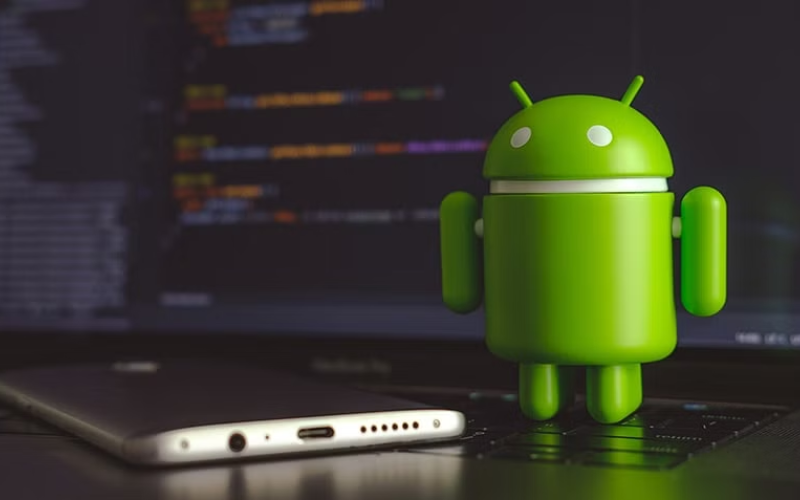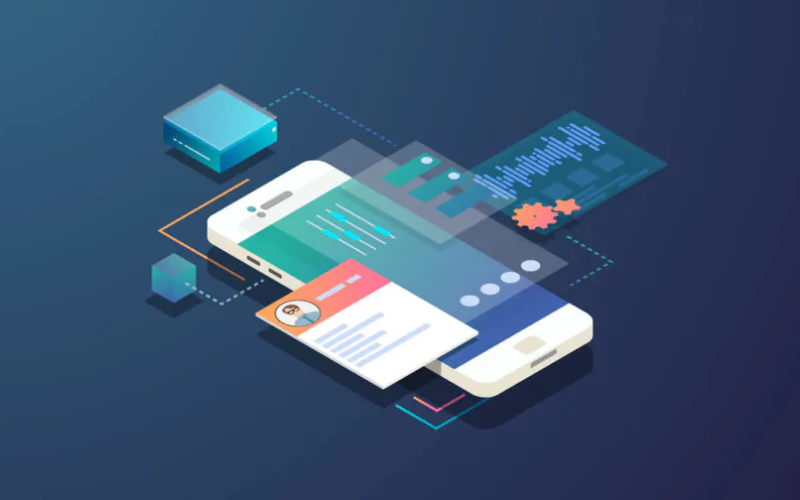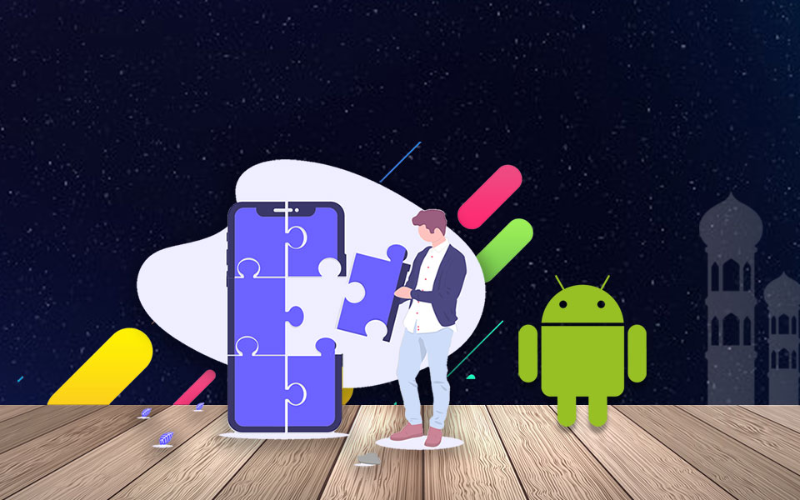Android is a well-known
operating system which is relies on the Linux kernel and is utilized for
creating mobile applications for Android.

Over 75% of mobile devices
worldwide utilize Android as the operating system for executing Android
applications. This is why the popularity of Android app development is rapidly
increasing among aspiring software developers.
Whether you are beginning
your journey in Android app development or seeking to enhance your current
abilities as an app developer, understanding the basics is crucial in crafting
prosperous apps.
Android
app development fundamentals
So, how difficult is it to
code an Android application? In this tutorial on Android application
development, we'll explore the fundamental principles and optimal approaches
for creating an Android application from the beginning.
However, remember that
getting help from a great development agency will benefit you in the long
term.
1.Acquire expertise in the necessary languages
Java and XML are the two
primary programming languages employed in developing Android applications.
Familiarity and proficiency in these programming languages are, therefore,
essential requirements for creating an Android app.
Thorough comprehension of
Java and XML will assist you in constructing a more resilient and sophisticated
android app.
2.Acquaintance with the appropriate application development tools
and environment
If you are entering the
world of Android app development, it is crucial that you acquaint yourself with
the automation tools, as well as the integrated development environment prior
to commencing the development of your app.
You can utilize the Android
app studio IDE or Eclipse; they will aid you in grasping the fundamentals and
various other aspects that will enhance the quality of your code.
You can master Apache Maven,
Gradle, and Apache Ant as they offer a formidable array of tools to assist in
managing your app. It is equally important that you familiarize yourself with
source control tools and principles.
Learn git and subsequently
establish a git-source repository (by creating an account on Bitbucket or
GitHub).
To gain a comprehension of
the fundamental concepts and terminology of how the platform functions, you can
refer to the Git Pocket Guide.
🔘 Related: Top Challenges of Mobile Application Development
3.Getting familiar with the application components
App components are the
fundamental building blocks of Android app development. Each of these
components serves as a unique entry point for the system to access your app.
While they all have their
own individual roles and functions, some of them rely on each other and not all
of them serve as actual entry points.
There are five distinct
types of app components, each serving a specific purpose and following a
defined life cycle that determines how they are created and terminated. These
components are listed below:
- Activities: This
component represents a single screen with a user interface. For example, an
email app may have one activity displaying a list of new emails, another
activity for composing emails, and another activity for reading emails.
Activities collaborate to create a seamless user experience within the app, but
they operate independently.
- Services: This is a
module that operates in the backdrop to carry out tasks for remote processes or
extended operations. It does not offer a user interface (for example, it might
play music silently while the user is using another application).
- Content providers:
This is the module that oversees a collective group of application data.
Through this module, the data that you save either in the file system, on the
internet, or in an SQLite database can be searched or even altered (as long as
the data provider permits it). This module is also beneficial for writing and
reading data that is exclusive to your application and not shared with others.
- Broadcast receivers:
This is the element that reacts to system-wide broadcast notifications. The
majority of the broadcast receivers come from the system, and even though they
do not show a user interface, they can generate a notification in the status
bar that informs the user when a broadcast event happens. In general, it acts as
an entry point to the other elements and it only performs minimal tasks.
- Activating elements:
A synchronous message known as intent triggers 3 out of the 4 elements (i.e.
activities, services, and broadcast receivers). Intents also connect individual
elements to each other during runtime whether the element belongs to your
application or not.

4.knowing fragmentations, Android App, Threads, Tasks, and Loaders
Android is a diverse market
with numerous devices and versions of operating systems. It is important to
note that if your device supports additional devices and/or versions, it will
require more maintenance, testing, and associated costs.
The opposite is also true.
You also need appropriate fonts, assets, and layouts to ensure optimal
experiences on various screen characteristics. Additionally, you should
consider the range of sensors or UI features supported by Android.
All Android applications
consist of an application class, one or more activities, and one or more
fragments. At times, you may have services for background tasks that require
continuous execution, while other times they may not be necessary.
To provide a seamless and
excellent user interface, it is crucial to ensure that the thread is never
blocked.
Consequently, lengthy
operations such as computations, I/O, and network tasks should be executed
asynchronously in the background (preferably on a separate thread of
execution).
This highlights the
importance of familiarizing oneself with the concurrency facilities provided by
the Java language. It is also where a professional development agency can help
you.
5.Choosing the right required tools
The basic tools that you
require for Android app development are simply a Mac or Windows personal
computer, any form of Linux, the ADT Plugin, Eclipse, and the Android SDK—all
of which are free.
You can consult the
installation manual on Google to understand how to establish your development
environment; it offers comprehensive documentation of all the necessary
components.
Android has some distinct
parameters that you should take into account when creating an Android app. Some
of them include:
- Efficiency and
responsiveness: You must always respond to user input within five seconds,
otherwise the operating system will ANR you. (ANR-application not responding –
the only choice you will have is to forcibly close your app.)
- Delays exceeding
100ms will be noticed by the users: As mentioned earlier, the UI thread
should never be blocked as it is the only one.
- Restricted
resources: Wake-locks (i.e. mechanism that compels the device to perform a
certain task despite the recommendation to put the device to sleep by the
battery manager) should be used sparingly. Avoid unnecessarily polling hardware
(e.g. GPS or accelerometer) as it will quickly deplete the battery.
How to develop an Android app?
With a concept for an
android mobile application in mind, the next step is the creation. There are
three primary methods to create an Android app, each with different advantages
and disadvantages.
Android
app generators
Using Android app generators
(codeless drag and drop app building) can quickly get an idea into the Google
Play store. However, it often results in mediocre outcomes.
Acquiring
Android app development skills
If you wish to create an
Android app on your own or are seeking information on how to develop Android
apps to become a competitive software developer, the time it takes to learn how
to code Android apps can hinder the speedy and efficient development of your
idea.
Hiring a development agency
In a competitive market,
securing the assistance of a skilled professional can be the key to success or
failure when it comes to creating an app quickly.
Sometimes, the most
advantageous choice for programming Android apps is to outsource the task to either
a company that offers web app development services (a group of experienced app developers
and user experience designers) or an independent contractor (a developer
working alone).
A team often brings more
knowledge and adaptability, not to mention dependability, to the table in order
to achieve business objectives.
If you are interested in
creating an Android app on your own or seeking information on how to develop
Android apps in order to become a competitive software developer, this guide is
the perfect starting point.
How to develop an Android app efficiently?
The Android Studio can aid
in accelerating code development, with reusable elements and templates, as well
as productivity tools like code suggestion, restructuring, and testing.

To efficiently and
effectively enhance an Android app, adhere to these practical suggestions:
Begin
with a small project
The secret to successful
comprehension is to initially grasp the fundamental principles of Android app
development.
Construct applications with
no objective other than to evaluate functions and characteristics until you are
proficient in the concept. There are numerous example projects accessible
online to assist in refining abilities.
Always
test your app
It is simple to initiate the
Android emulator from within the Android Studio to verify the app on a
simulated device as though it were an actual device.
Consistent testing across
various virtual devices can consider various screen sizes, versions of Android,
and usability of components.
🔘 Read More: Top Mobile App Development Services and Trends in 2022
Acquire
knowledge at the appropriate speed
For a fresh coder practicing
2 to 4 hours a day, anticipate a minimum of 6 months to become proficient in a
new language and at least another 3 to 9 months to create a new app.
Be patient
Depending on the level of
expertise as an app developer, the initial app created may not achieve the
desired outcome.
It may not even function as
anticipated. Persist! By further studying diverse Android mobile app tutorials
and engaging in more practice, you will reach your goal.
The typical app takes
anywhere from 3 to 9 months to develop for skilled developers.
Keep
learning
It is impractical to
construct exceptional Android apps overnight, and even the most exceptional
apps require constant attention to remain up-to-date.
Technology and design trends
evolve rapidly, so stay informed about the latest developments in Android
through various blogs, podcasts, news sites, or the official Android
development blog.
Conclusion
Android is a mobile
operating system created primarily for smartphones. It is founded on the Linux
Kernel and other open-source software and is produced by Google.
It is utilized for
touch-based mobile devices like smartphones and tablets. However, in recent
times, it has also been employed in Android Auto cars, televisions, cameras, smartwatches,
and more.
It has consistently been one
of the top-selling operating systems for smartphones.
Applications make phones
"intelligent" and thanks to their advantages, applications have
significantly changed the way we operate in today's world.
Skilled app developers are
becoming occupied, creating and constructing their own applications and
incorporating them with favorable characteristics.
When it comes to Android App
development, there’s a lot to learn. However, the best strategy is hiring a
skilled development agency.
If you want to create an
Android app, contact us to get the help you need!